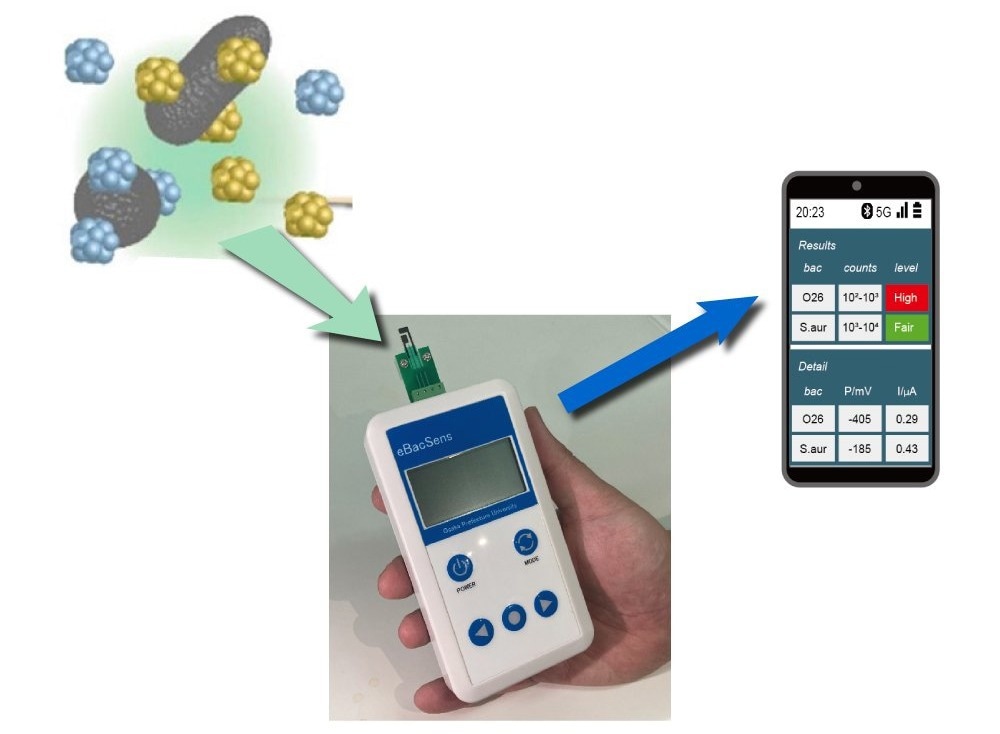
Marking bacteria electrochemically for rapid detection. From left: Image of bacteria labeled with electrochemical markers, an electrochemical instrument to measure the data, and an image of the data displayed on a smartphone. Image Credit: Hiroshi Shiigi, Osaka Metropolitan University
Traditionally, testing involves taking food samples to a lab to analyze the types and quantities of bacteria that grow on a petri dish over several days. However, a research team at Osaka Metropolitan University has developed a handheld device that allows for swift on-site detection. The findings were published in Analytical Chemistry.
Under the direction of Graduate School of Engineering Professor Hiroshi Shiigi, the group experimented using a biosensor that can identify several disease-causing bacterial species at once in less than an hour.
The palm-sized device for detection can be linked to a smartphone app to easily check bacterial contamination levels.
Hiroshi Shiigi, Professor, Graduate School of Engineering
The team synthesized organic metallic nanohybrids of gold and copper, designed to prevent mutual interference, thereby enabling the distinction of electrochemical signals on the same screen-printed electrode chip of the biosensor.
These organic−inorganic hybrids consist of conductive polymers and metal nanoparticles. The antibody for the specific target bacteria was then introduced into these nanohybrids to serve as electrochemical labels.
Results validated that the synthesized nanohybrids acted as effective electrochemical labels, facilitating the concurrent detection and quantification of multiple bacterial strains in under an hour.
This technique enables rapid determination of the presence or absence of harmful bacteria prior to shipment of food and pharmaceutical products, thereby helping to quickly ensure safety at the manufacturing site.
Hiroshi Shiigi, Professor, Graduate School of Engineering
The group wants to create new organic metallic nanohybrids that will enable them to identify even more bacterial species at the same time.
Financial support for this study was provided by a JST START grant (no. JPMJST1916). Financial aid was also provided by the Japan Society for the Promotion of Science Grant-in-Aid for Scientific Research (A) (Kakenhi grant no. 21H04963) and Grants-in-Aid for Challenging Exploratory Research (grant no. 22K18442).
JST provided financial support to Satohiro Itagaki through the establishment of university fellowships aimed at fostering innovation in science and technology.
Journal Reference:
Itagaki, S., et al. (2024) Simultaneous Electrochemical Detection of Multiple Bacterial Species Using Metal–Organic Nanohybrids. American Chemical Society. doi.org/10.1021/acs.analchem.3c04587.